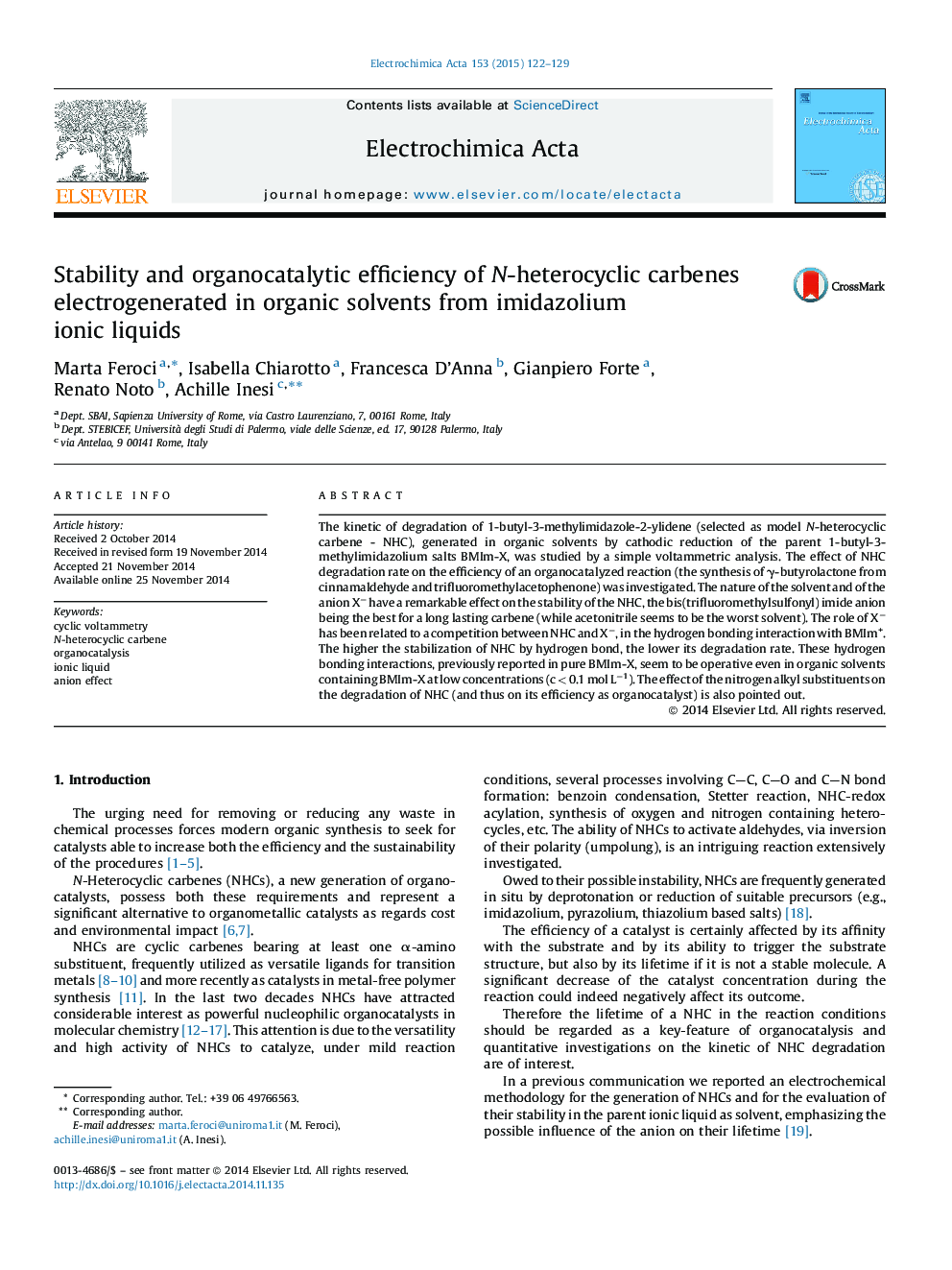| کد مقاله | کد نشریه | سال انتشار | مقاله انگلیسی | نسخه تمام متن |
|---|---|---|---|---|
| 184737 | 459581 | 2015 | 8 صفحه PDF | دانلود رایگان |

• A simple cyclic voltammetry allows to determine the presence of a NHC in solution.
• The degradation rate of a NHC is influenced by the solvent and starting ionic liquid.
• The organocatalytic efficiency of a NHC decreases with time.
• The yields of a NHC-catalyzed reaction depend on the time elapsed from electrolysis.
• N(SO2CF3)2− anion seems to be the best anion for a high NHC lifetime.
The kinetic of degradation of 1-butyl-3-methylimidazole-2-ylidene (selected as model N-heterocyclic carbene - NHC), generated in organic solvents by cathodic reduction of the parent 1-butyl-3-methylimidazolium salts BMIm-X, was studied by a simple voltammetric analysis. The effect of NHC degradation rate on the efficiency of an organocatalyzed reaction (the synthesis of γ-butyrolactone from cinnamaldehyde and trifluoromethylacetophenone) was investigated. The nature of the solvent and of the anion X− have a remarkable effect on the stability of the NHC, the bis(trifluoromethylsulfonyl) imide anion being the best for a long lasting carbene (while acetonitrile seems to be the worst solvent). The role of X− has been related to a competition between NHC and X−, in the hydrogen bonding interaction with BMIm+. The higher the stabilization of NHC by hydrogen bond, the lower its degradation rate. These hydrogen bonding interactions, previously reported in pure BMIm-X, seem to be operative even in organic solvents containing BMIm-X at low concentrations (c < 0.1 mol L−1). The effect of the nitrogen alkyl substituents on the degradation of NHC (and thus on its efficiency as organocatalyst) is also pointed out.
Figure optionsDownload as PowerPoint slide
Journal: Electrochimica Acta - Volume 153, 20 January 2015, Pages 122–129